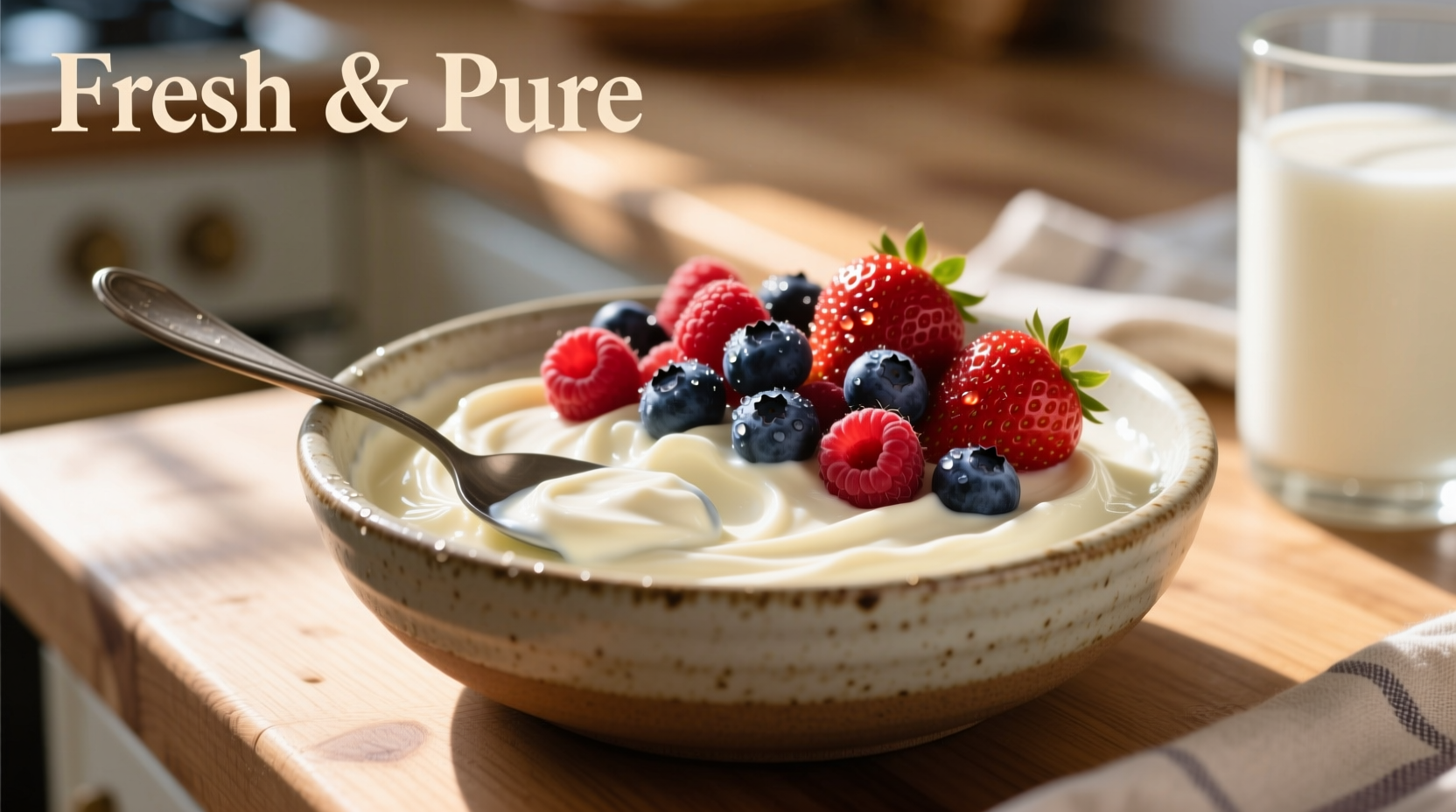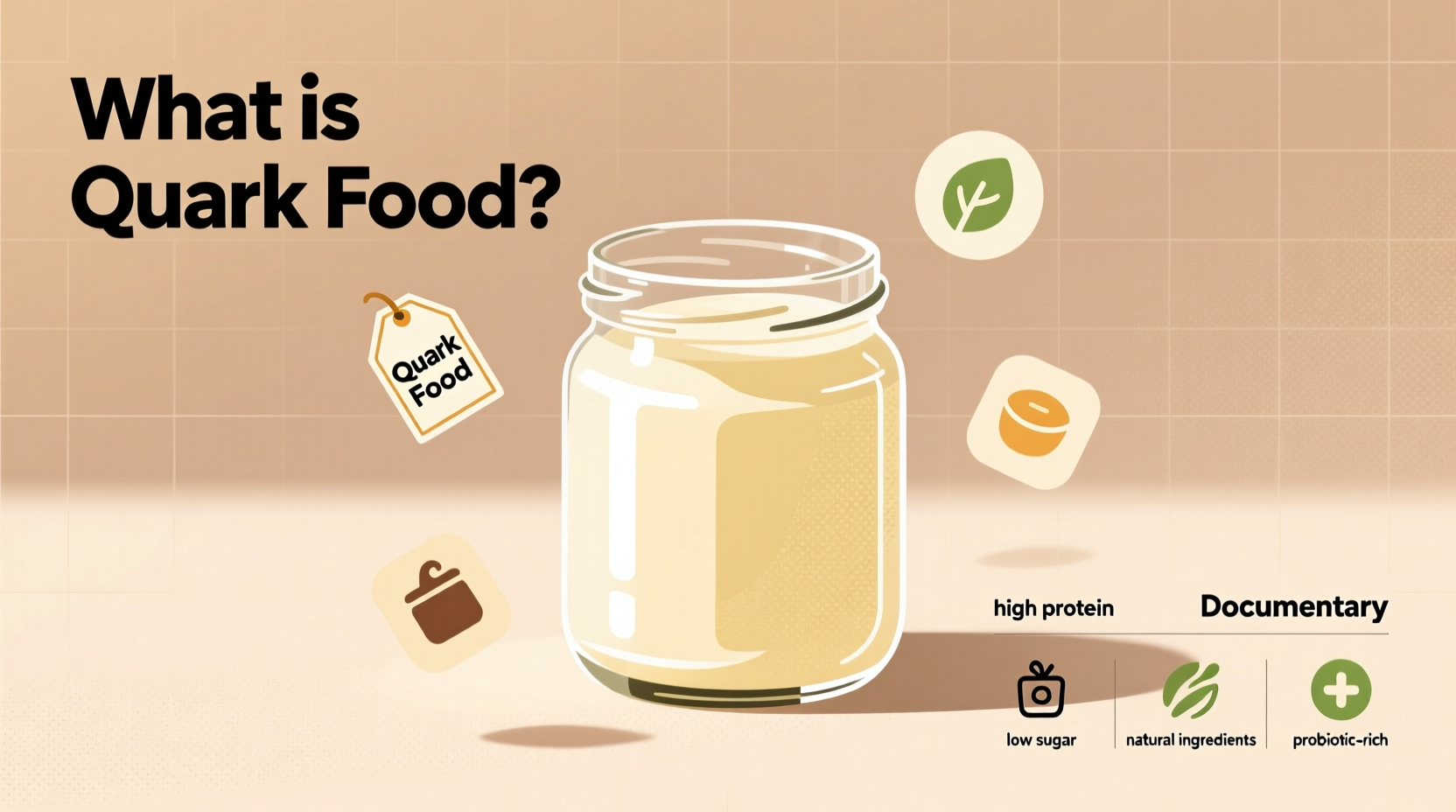Understanding Quark: More Than Just Another Dairy Product
When you encounter "what is quark food" in a recipe or grocery store, you're discovering one of Europe's best-kept culinary secrets. Quark (pronounced "kvark") has been enjoyed for centuries across Germany, Poland, and Scandinavian countries as a versatile ingredient that bridges the gap between yogurt and cheese.
Quark's Historical Journey: From Farmhouse Staple to Global Superfood
Quark's story begins in medieval Europe when farmers developed simple methods to preserve milk. Unlike aged cheeses requiring complex processes, quark emerged as an accessible fresh dairy product through natural souring and gentle heating. Historical records from 16th century Germany document "quarg" as a dietary staple, while Russian "tvorog" and Polish "twaróg" represent regional variations of this same fundamental food.
| Dairy Product | Protein (per 100g) | Fat Content | Texture | Acidity Level |
|---|---|---|---|---|
| Quark | 11g | 0.2-20% (varies) | Smooth, creamy | Mild |
| Greek Yogurt | 9g | 0-10% | Thick, slightly grainy | High |
| Cottage Cheese | 11g | 1-20% | Lumpy, curdled | Moderate |
| Ricotta | 7g | 10-13% | Grainy, moist | Low |
What Makes Quark Unique: Texture, Flavor, and Nutrition
Quark's distinctive characteristics set it apart from similar dairy products. Its production involves warming soured milk until it forms curds, then straining it through cheesecloth without adding rennet. This process creates a smooth, spreadable texture without the lumps found in cottage cheese. The USDA FoodData Central confirms quark's impressive nutritional profile: high-quality complete protein, essential calcium, and beneficial probiotics, with fat content ranging from skim (0.2%) to full-fat (20%) varieties (USDA FoodData Central).

Practical Uses: How to Incorporate Quark Into Your Cooking
Understanding what is quark food means discovering its remarkable versatility in both sweet and savory applications. Professional chefs value quark's neutral flavor and binding properties for:
- Breakfast boost: Substitute for yogurt in parfaits or smoothies
- Baking secret: Replace cream cheese in cheesecakes for lighter texture
- Savory applications: Mix with herbs for spreads or dollop on roasted vegetables
- Protein power: Blend with fruit for high-protein snacks
Finding and Storing Quark: What Shoppers Need to Know
While traditionally challenging to find outside Europe, quark has become increasingly available in mainstream supermarkets. Look for it in the dairy section near specialty cheeses or Greek yogurt. Major brands like Hänfels and Elliotts Farm now distribute authentic quark across North America. When selecting quark, check expiration dates carefully as fresh dairy products have limited shelf life. Store unopened containers in the coldest part of your refrigerator and consume within 5-7 days after opening.
Quark Substitutes: What to Use When You Can't Find It
When searching for what is quark food alternatives, consider these practical substitutions:
- For baking: Blend 3 parts Greek yogurt with 1 part cream cheese
- For savory dishes: Use blended cottage cheese through a fine sieve
- For protein content: Try skyr or fromage blanc as closest matches
Nutritional Benefits: Why Health-Conscious Eaters Choose Quark
Nutrition scientists at the European Food Information Council highlight quark's advantages for digestive health and muscle maintenance (European Food Information Council). Its complete protein profile contains all nine essential amino acids, while the natural fermentation process creates beneficial bacteria that support gut health. Compared to similar dairy products, quark typically contains less sodium and fewer carbohydrates, making it suitable for various dietary approaches including keto and high-protein eating plans.











 浙公网安备
33010002000092号
浙公网安备
33010002000092号 浙B2-20120091-4
浙B2-20120091-4